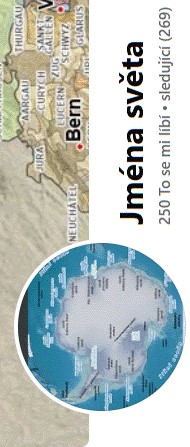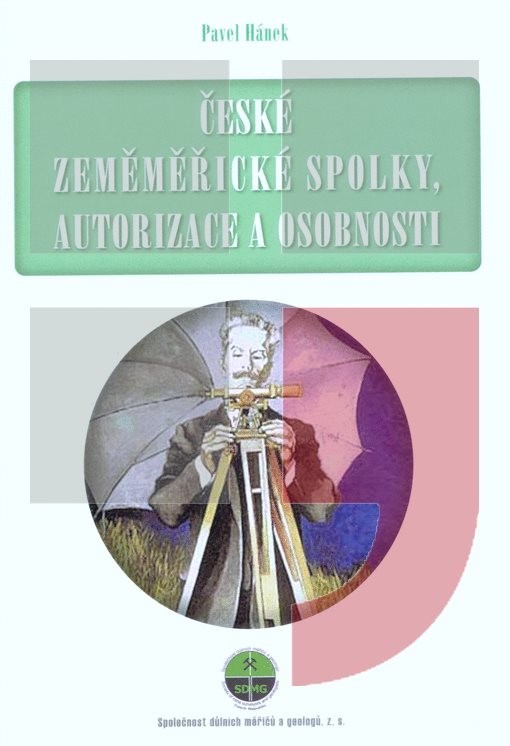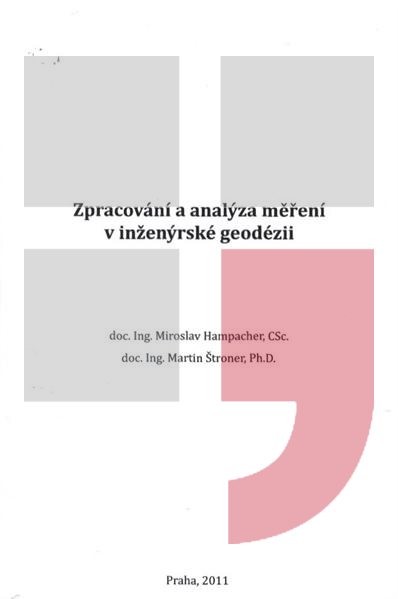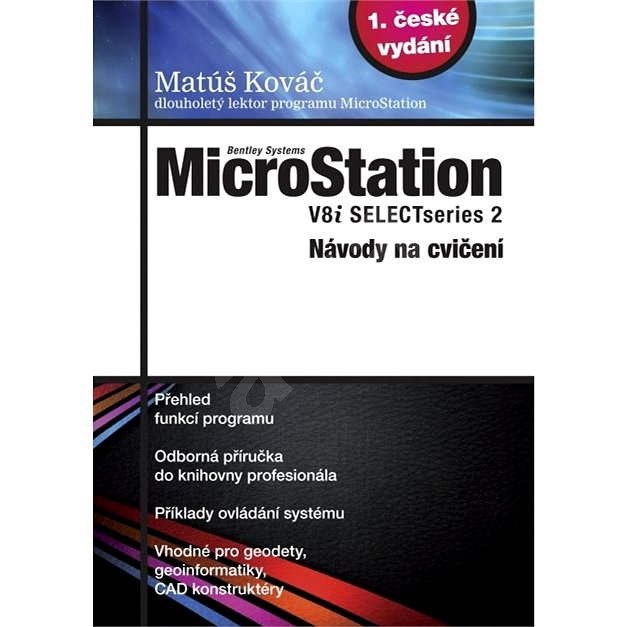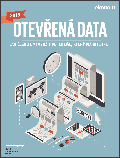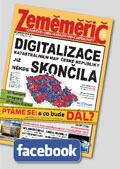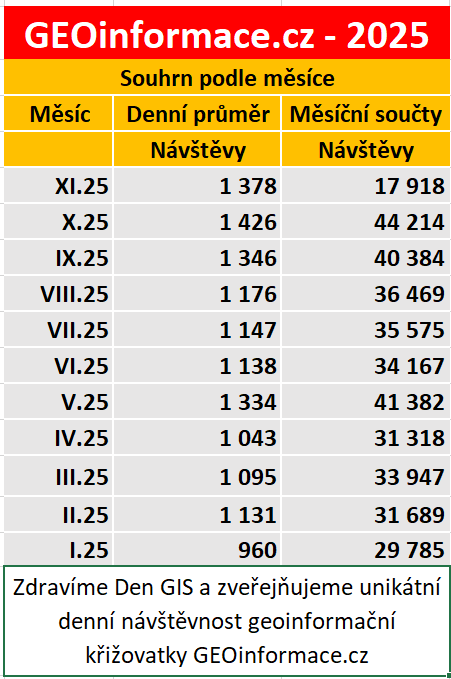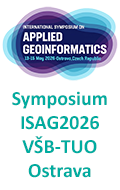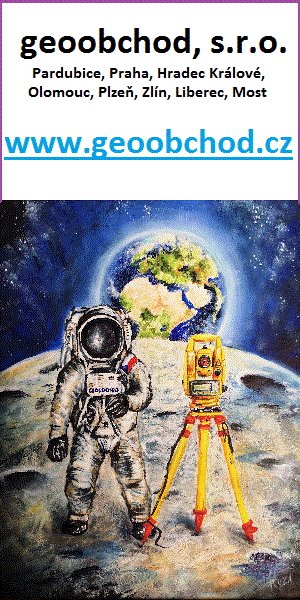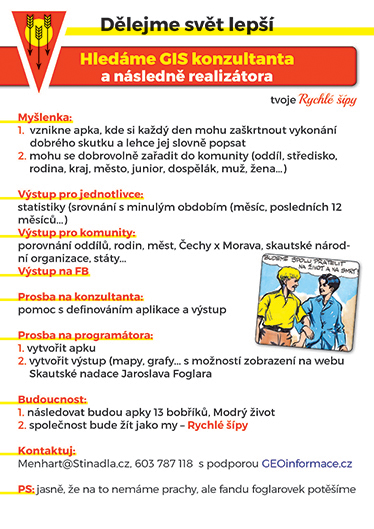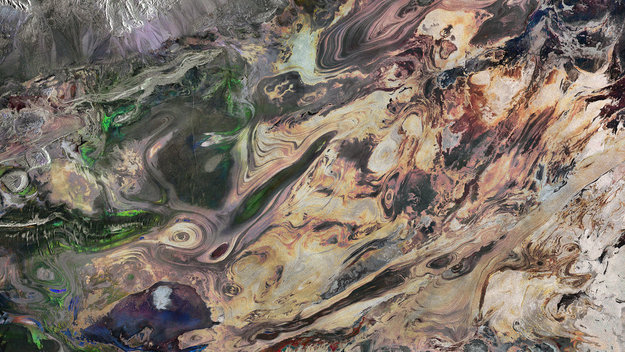ESA Observing the Earth 
zdroje zpráv:
Upsala Glacier
2.9.2016 10:00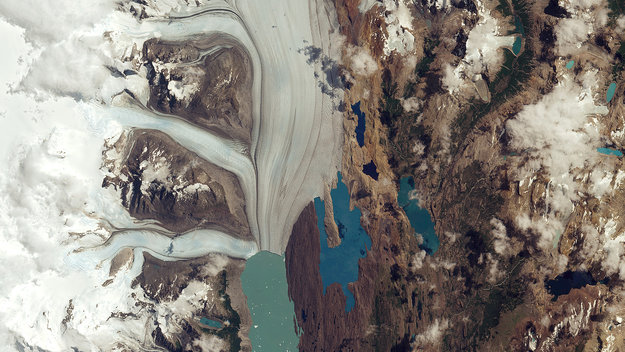
Earth observation image of the week: a Sentinel-2A image of Argentina’s Upsala Glacier, which has retreated more than 3 km in the past 15 years
Earth from Space
1.9.2016 14:00
The ‘Earth from Space’ video programme is back! Join us Friday, 2 September, at 10:00 CEST and discover Argentina’s Upsala Glacier
Intro to EO: sign up today
1.9.2016 9:00
Sign up for a free online course that provides an introduction to optical satellite Earth observation. The five-week Future Learn course begins on 12 September
Copernicus Sentinel-1A satellite hit by space particle
31.8.2016 16:00
ESA engineers have discovered that a solar panel on the Copernicus Sentinel-1A satellite was hit by a millimetre-size particle in orbit on 23 August. Thanks to onboard cameras, ground controllers were able to identify the affected area. So far, there has been no effect on the satellite’s routine operations.
Copernicus Sentinel-1A satellite hit by space particle
31.8.2016 16:00
ESA engineers have discovered that a solar panel on the Copernicus Sentinel-1A satellite was hit by a millimetre-size particle in orbit on 23 August. Thanks to onboard cameras, ground controllers were able to identify the affected area. So far, there has been no effect on the satellite’s routine operations.
Sentinel-1 provides new insight into Italy’s earthquake
29.8.2016 16:52
On 24 August, an earthquake struck central Italy, claiming at least 290 lives and causing widespread damage. Satellite images are being used to help emergency aid organisations, while scientists have begun to analyse ground movement.
Sentinel-1 provides new insight into Italy’s earthquake
29.8.2016 16:52
On 24 August, an earthquake struck central Italy, claiming at least 290 lives and causing widespread damage. Satellite images are being used to help emergency aid organisations, while scientists have begun to analyse ground movement.
First satellite-based wildlife monitoring tool for airports
29.8.2016 12:24
Wildlife habitats close to airports pose a serious risk to safety at takeoff and landing. Thanks to ESA, a new service lets airports use satellites to identify and manage these areas.
First satellite-based wildlife monitoring tool for airports
29.8.2016 12:24
Wildlife habitats close to airports pose a serious risk to safety at takeoff and landing. Thanks to ESA, a new service lets airports use satellites to identify and manage these areas.
Land shifts in Italy
26.8.2016 17:45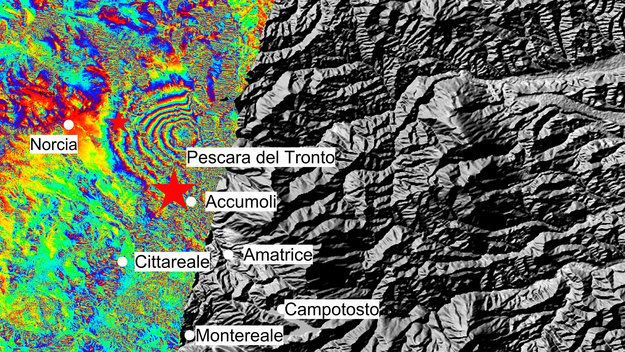
The Sentinel-1A satellite has given us a picture of the ground deformation caused by the 24 August earthquake in Italy
Bridging the Bosphorus
26.8.2016 10:42
Sentinel-2A captured the progress of Turkey’s Third Bosphorus Bridge, which opens today
FLEX takes on mutants
25.8.2016 17:00
Because a plant isn’t green doesn’t mean it can’t photosynthesise as well as its more usual counterpart, but when measured by satellites, these non-green varieties skew results on plant health. FLEX is different. Experiments using ‘mutants’ show that colour won’t be an obstacle in this new mission’s task of mapping plant health from space.
Touch on climate
9.8.2016 10:30
Discover our planet's changing climate through the eyes of satellites with Climate from Space, a new iPad App featuring interactive maps and video interviews with top scientists
Summer school shines
8.8.2016 14:10
Young Earth scientists from all over the world have gathered for their two-week summer school course at ESA’s ESRIN centre for Earth observation in Frascati, Italy.
Summer school shines
8.8.2016 14:10
Young scientists from all over the world have gathered for their two-week summer school course at ESA’s ESRIN centre for Earth observation in Frascati, Italy.
Aladin wind probe ready for Aeolus
2.8.2016 16:30
It has been years in the making, but one of the trickiest pieces of space technology ever developed is finally ready to join its satellite for launch by the end of next year. With this milestone, we are another step closer to a better understanding of Earth’s winds.
Iranian painting
29.7.2016 10:00
Earth observation image of the week: A Sentinel-2A image of northeastern Iran
Earth from Space
28.7.2016 14:00
Join us Friday, 29 July, at 10:00 CEST for the ‘Earth from Space’ video programme. This week features a Sentinel-2A image of northeastern Iran
SMOS tracks Pacific fresh water pools
27.7.2016 13:56
ESA’s SMOS satellite has found a rise in fresh water in the tropical Pacific Ocean during last year’s El Niño event.
Sand and sea
27.7.2016 12:00The Sentinel-3A satellite recently caught this image of a dust storm blowing east across the Red Sea
Sand and sea
27.7.2016 12:00
The Sentinel-3A satellite recently caught this image of a dust storm blowing east across the Red Sea
CryoSat sets new standard for measuring sea levels
26.7.2016 14:40
Trying to measure sea levels around rugged coastlines is not always an easy task. ESA’s CryoSat satellite is making a difference with its radar altimeter.
Tonga
22.7.2016 10:00
Earth observation image of the week: Tonga’s Tongatapu island in the southern Pacific Ocean
Earth from Space
21.7.2016 14:25
Join us Friday, 22 July, at 10:00 CEST for the ‘Earth from Space’ video programme. This week features a Sentinel-2A image of Tonga’s Tongatapu island
Chilly summer for Sentinel-2B
18.7.2016 10:37
While most of us may be looking forward to spending some time in the sunshine this summer, the Sentinel-2B satellite is being subjected to the extreme cold of space to make sure it is fit for life in orbit.
Sundarbans web
15.7.2016 10:00
Earth observation image of the week: A Sentinel-2A image of Sundarbans, Bangladesh
Earth from Space
14.7.2016 14:00
Join us Friday, 15 July, at 10:00 CEST for the ‘Earth from Space’ video programme. This week features a Sentinel-2A image of the Sundarbans, in Bangladesh
Europe’s workhorse Sentinel ready for action
13.7.2016 14:20
Getting the bigger picture on the health of our planet drew another step closer today as Europe’s Sentinel-3A satellite was handed over to Eumetsat for operations.
CryoSat reveals recent Greenland ice loss
12.7.2016 13:30
In the most detailed picture to date, information from ESA’s CryoSat satellite reveals how melting ice in Greenland has recently contributed twice as much to sea-level rise as the prior two decades.
ESA’s Dragon cooperation with China extended to 2020
8.7.2016 10:39
ESA and China have launched the fourth phase of the collaborative Dragon programme in Wuhan City, on the Yangtze River, which recently experienced major floods witnessed by Europe’s Sentinel-1 satellite.
Malaspina Glacier
8.7.2016 10:00
Earth observation image of the week: The world’s largest ‘piedmont’ glacier
Earth from Space
7.7.2016 14:40
Join us Friday, 8 July, at 10:00 CEST for the ‘Earth from Space’ video programme. This week features a Sentinel-2A image of the Malaspina Glacier in Alaska
A study in scarlet
6.7.2016 12:00
Technology image of the week: ESA minisatellite Proba-V images the Netherlands and its vegetation in false colour
Looking out for coral bleaching
1.7.2016 12:00
The EOMAP aquatic remote sensing company, together with partners at the Remote Sensing Research Centre of Queensland University and the Great Barrier Reef Foundation, are developing new methods to monitor and detect coral bleaching events using Europe’s Sentinel-2A satellite.
Mount St Helens
1.7.2016 10:00
Earth observation image of the week: An active volcano in the US state of Washington
Earth from Space
30.6.2016 14:55
Join us Friday, 1 July, at 10:00 CEST for the ‘Earth from Space’ video programme. This week features a Sentinel-2A image of Mount St Helens in the US
Sentinels for Regions
27.6.2016 9:08
Discover how Sentinel data support local and regional authorities by following an event live from the European Parliament in Brussels at 15:00–18:00 CEST on 28 June
Mediterranean wonders
24.6.2016 10:00
Earth observation image of the week: A Sentinel-3A image of various countries in the Mediterranean Sea
Earth from Space
23.6.2016 14:00
Join us Friday, 24 June, at 10:00 CEST for the ‘Earth from Space’ video programme. This week features a Sentinel-3A image of the Mediterranean
Floating Piers
22.6.2016 17:05
The Sentinel-2A satellite captured creation of the ‘Floating Piers’ installation on Lake Iseo by the Bulgarian–American artist, Christo
Sentinel space testing
22.6.2016 16:55
Technology image of the week: Sentinel-2B being lowered into Europe's largest vacuum chamber for testing
Sentinel space testing
22.6.2016 15:30
Technology image of the week: Sentinel-2B being lowered into Europe's largest vacuum chamber for testing
Sentinel-1 satellites combine radar vision
22.6.2016 11:30
The twin Sentinel-1 satellites have – for the first time – combined to show their capability for revealing even small deformations in Earth’s surface.
Southern Tibetan Plateau
17.6.2016 10:00
Earth observation image of the week: A Sentinel-2A image of the Tibetan Plateau
Earth from Space
16.6.2016 14:00
Join us Friday, 17 June, at 10:00 CEST for the ‘Earth from Space’ video programme. This week features a Sentinel-2A image of the southern Tibetan Plateau
New ESA Director of Earth Observation
14.6.2016 13:10
At a restricted meeting of the ESA Council held in Paris today Mr Josef Aschbacher was appointed as ESA Director of Earth Observation.
New ESA Director of Earth Observation
14.6.2016 13:10
At a restricted meeting of the ESA Council held in Paris today Mr Josef Aschbacher was appointed as ESA Director of Earth Observation.
Sentinel-1B timelapse
13.6.2016 14:30
A look back on the preparations for the 25 April liftoff of Sentinel-1B
Calling App developers
10.6.2016 14:00
Sign up for the next ESA Space App Camp to create innovative Apps using satellite data
United Kingdom
10.6.2016 10:00
Earth observation image of the week: A Sentinel-3A image of the United Kingdom
Earth from Space
9.6.2016 14:30
Join us Friday, 10 June, at 10:00 CEST for the ‘Earth from Space’ video programme. This week features a Sentinel-3A image of the UK
Estonia’s first contract with ESA focuses on ocean health
7.6.2016 13:41
Estonia has been awarded its first contract since becoming an ESA Member State in 2015. Over the next three years, scientists from Estonia’s Tartu Observatory will head an international team to ensure that Sentinel-3’s measurements of ocean colour are of the highest quality possible.
Monitoring pipelines from space
6.6.2016 10:35
Dutch company Orbital Eye has developed a service that uses satellites to monitor gas and oil pipelines. A major African pipeline operator has already signed up for the service.
Southern Maine
3.6.2016 10:00
Earth observation image of the week: A Sentinel-2A image of Maine and New Hampshire, USA
Earth from Space
2.6.2016 14:00
Join us Friday, 3 June, at 10:00 CEST for the ‘Earth from Space’ video programme. This week, Sentinel-2 takes us over Maine and New Hampshire in the northeast US
First EDRS laser image
1.6.2016 12:20
ESA today unveiled the first Sentinel-1 satellite images sent via the European Data Relay System’s world-leading laser technology in high orbit
Sentinels in the fields
1.6.2016 10:54
The unprecedented frequency of Sentinel observations capture rapid changes in agricultural production from national to field scale, serving as a major support for environmental monitoring and agricultural subsidy control.
Mapping that sinking feeling
1.6.2016 10:50For a low-lying, densely populated country like the Netherlands, monitoring subsidence is critical. Until recently, tiny displacements in the ground beneath our feet couldn’t be mapped nationally but, thanks to the Sentinel-1 mission, this is now possible.
Fort McMurray fires
31.5.2016 14:46
The Sentinel-2 satellite recently captured this image of wildfires in Canada’s Alberta province
Chile's salt flat
27.5.2016 10:00
Earth observation image of the week: A Sentinel-2A image of Salar de Atacama, Chile
Sentinel-1 helping Cyclone Roanu relief
26.5.2016 15:00
Cyclone Roanu has claimed over 100 lives in Sri Lanka and Bangladesh, and has left tens of thousands in need of aid. Officials are looking to the sky for information on flooded areas to analyse the cyclone’s aftermath and support emergency response activities.
Earth from Space
26.5.2016 14:00
Join us Friday, 27 May, at 10:00 CEST for the ‘Earth from Space’ video programme. This week features a Sentinel-2A image of Chile
Call for media
26.5.2016 9:39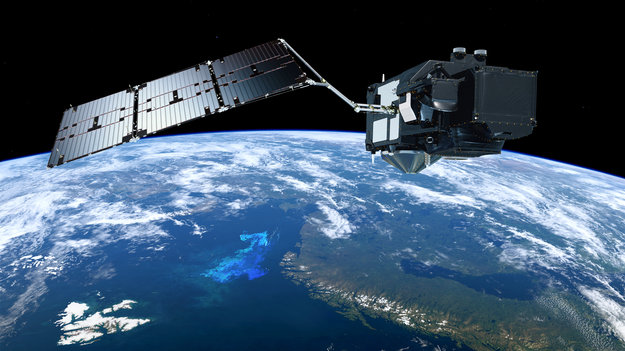
Media representatives are invited to the European Space Solutions Conference on 30 May in The Hague, Netherlands, to hear about the first results from Sentinel-3A
Sentinel-1A spots potential oil slick from missing EgyptAir plane
20.5.2016 13:30
The Sentinel-1A radar satellite has detected a potential oil slick in the eastern Mediterranean Sea – in the same area where EgyptAir flight MS804 disappeared early yesterday morning on its way from Paris to Cairo.
Rub’ al Khali Desert
20.5.2016 10:00
Earth observation image of the week: A Sentinel-2A image of the Rub’ al Khali desert
Canadian fires tracked by satellites
19.5.2016 16:58
Wildfires have been raging in Canada’s Alberta province for nearly three weeks, causing widespread destruction and forcing thousands of people from their homes. As the blaze grows and shifts, satellites are tracking its movement.
Sun glitter reveals coastal waves
19.5.2016 15:45
Sentinel-2A is demonstrating how it can be used to help forecast ocean waves around our coasts: sunlight reflected from the water surface reveals complex waves as they encounter the coastline and seafloor off the tip of Dorre Island, Western Australia.
Earth from Space
19.5.2016 14:00
Join us Friday, 20 May, at 10:00 CEST for the ‘Earth from Space’ video programme. This week features a Sentinel-2A image of the Rub’ al Khali desert
African mosaic
18.5.2016 12:49
Images from Sentinel-2A over the last five months have been used to create a remarkable cloud-free view of Africa
Simulating Tropomi
13.5.2016 14:00
Presented at this week’s Living Planet Symposium, this image shows how the Sentinel-5P satellite will improve air-quality forecasts
Living Planet 2016
13.5.2016 13:30
Selected highlights of the Living Planet Symposium in Prague, 9-13 May
Methane and carbon dioxide on the rise
13.5.2016 12:00
Satellite readings show that atmospheric methane and carbon dioxide are continuing to increase despite global efforts to reduce emissions.
Earth from Space
13.5.2016 9:00
René Forsberg joins the programme at the Living Planet Symposium in Prague to discuss collecting gravity data at the South Pole to support GOCE
Complex data made easy
12.5.2016 14:52
While the growing volume information from satellites observing Earth offers a unique opportunity for science and applications, it is sometimes difficult to make sure these complex data streams are exploited to their full potential. ESA is addressing this challenge with ‘Thematic Exploitation Platforms’.
Complex data made easy
12.5.2016 14:52
While the growing volume information from satellites observing Earth offers a unique opportunity for science and applications, it is sometimes difficult to make sure these complex data streams are exploited to their full potential. ESA is addressing this challenge with ‘Thematic Exploitation Platforms’.
Water for crops
12.5.2016 12:00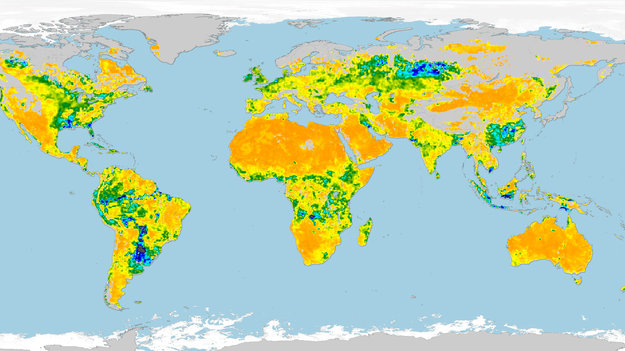
By providing information on soil moisture around plant roots, ESA’s SMOS satellite is helping to forecast crop yield and monitor drought
Earth from Space
12.5.2016 9:00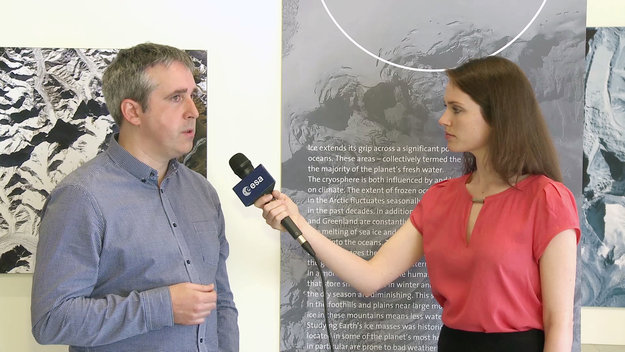
Noel Gourmelen joins the programme at the Living Planet Symposium in Prague to discuss a new way of processing CryoSat data over ice sheets
From petabytes to pictures
11.5.2016 14:35
Thousands of scientists are at the Living Planet Symposium in Prague this week to present the latest findings on our changing planet. Between the mountains of data coming from multiple satellites and the high level of expertise needed to translate them into useful information, the results are not always easy to understand.
Dynamic peninsula
11.5.2016 12:00
Presented at the Living Planet Symposium, this map uses radar images from Sentinel-1A to show that Antarctic Peninsula ice flows up to a metre per day
Earth from Space
11.5.2016 10:25
Peter Land joins the programme at the Living Planet Symposium in Prague to discuss ocean acidification
Earth’s magnetic heartbeat
10.5.2016 14:35
With more than two years of measurements by ESA’s Swarm satellite trio, changes in the strength of Earth's magnetic field are being mapped in detail.
Earth’s magnetic heartbeat
10.5.2016 14:35
With more than two years of measurements by ESA’s Swarm satellite trio, changes in the strength of Earth's magnetic field are being mapped in detail.
Sea-level highs and lows
10.5.2016 10:30
Sentinel-3A reveals variations in global sea level at this week’s Living Planet Symposium
Earth from Space
10.5.2016 9:10
Wolfram Mauser, Chairman of the Earth Science Advisory Committee, joins us at the Living Planet Symposium in Prague to discuss some of the highlights from ESA’s Earth Explorer missions
Spotlight on our living planet
9.5.2016 15:20
One of the biggest Earth observation conferences in the world got off to a flying start today as thousands of scientists from around the world gathered in the Czech Republic to present their latest findings on our changing planet.
Czechered landscape
9.5.2016 14:00
Different types of crops growing east of the Czech capital are distinguished in this land cover classification image
Living Planet opens
9.5.2016 12:10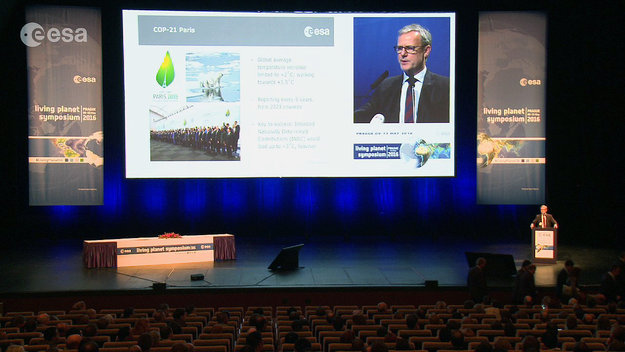
Watch the replay of the opening session of the Living Planet Symposium in Prague, 9–13 May
Symposium App
9.5.2016 10:00
Attending the Living Planet Symposium in Prague this week? See what’s on and find your way around with the App
Living Planet Symposium
6.5.2016 15:00
For the latest news, interviews and web streaming of the world’s largest Earth observation conference, being held in Prague on 9–13 May, visit our dedicated web page
Follow the Symposium
6.5.2016 12:00
Watch selected sessions of the Living Planet Symposium live from the Prague Conference Centre in the Czech Republic on 9–13 May
Zachariae Isstrom
6.5.2016 10:05
Earth observation image of the week: A Sentinel-1 image of the Zachariae Glacier
Earth from Space
5.5.2016 14:20
Join us Friday, 6 May, at 10:00 CEST for the ‘Earth from Space’ video programme. This week features a Sentinel-1 image of the Zachariae Isstrom Glacier
Earth from Space
5.5.2016 14:20
Join us Friday, 6 May, at 10:00 CEST for the ‘Earth from Space’ video programme. This week features a Sentinel-1 image of the Zachariae Isstrom Glacier
Earth from Space
5.5.2016 14:00
Join us Friday, 6 May, at 10:00 CEST for the ‘Earth from Space’ video programme. This week features a Sentinel-1 image of the Zachariae Isstrom Glacier
Ready to build the Biomass forest mission
3.5.2016 14:30
ESA and Airbus Defence and Space UK signed a €229 million contract on 29 April to build the next Earth Explorer: the Biomass satellite, due to begin its mission in 2021.
Call for media
3.5.2016 11:04
Media representatives are invited to the Living Planet Symposium in Prague, Czech Republic, to hear about the latest results from Europe’s Earth observation satellites and initiatives
Colourful Naukluft
29.4.2016 10:05
Earth observation image of the week: A Sentinel-2A image of Namibia
Sentinel-1B first image
28.4.2016 18:05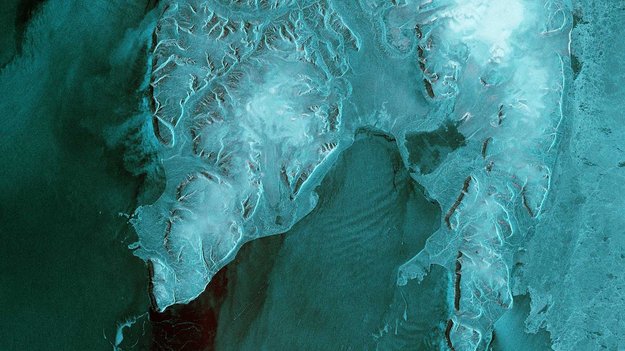
Less than three days after it was launched, Sentinel-1B has delivered its first radar image of Earth
Sentinel-1B first image
28.4.2016 17:05
Less than three days after it was launched, the Sentinel-1B satellite has delivered its first radar image of Earth
Sentinel-1B delivers
28.4.2016 16:00
Launched on 28 April from Europe’s Spaceport in French Guiana, Sentinel-1B has produced its first images only two hours after the radar was switched on – a record time for a space radar.
Sentinel-1B delivers
28.4.2016 16:00
Launched on 25 April from Europe’s Spaceport in French Guiana, Sentinel-1B has produced its first images only two hours after the radar was switched on – a record time for a space radar.
Earth from Space
28.4.2016 14:00
Join us Friday, 29 April, at 10:00 CEST for the ‘Earth from Space’ video programme. This week features a Sentinel-2A image of Namibia
Earth from Space
28.4.2016 14:00
Join us Friday, 29 April, at 10:00 CEST for the ‘Earth from Space’ video programme. This week features a Sentinel-2A image of Namibia
Sentinel-1B spreads its wings
27.4.2016 9:15
Following liftoff on 25 April from Europe’s Spaceport in French Guiana, Sentinel-1B has opened its large solar wings and radar antenna.
Sentinel-1B spreads its wings
27.4.2016 9:15
Following liftoff on 25 April from Europe’s Spaceport in French Guiana, Sentinel-1B has opened its large solar wings and radar antenna.
Revisit the launch event
26.4.2016 9:25
From ESA’s ESRIN centre for Earth observation in Italy, watch the replay of the event celebrating Sentinel-1B
Launch replay
26.4.2016 0:15
Watch the replay of the Sentinel-1B launch coverage from Europe’s Spaceport in French Guiana on 25 April
Sentinel-1B launched to complete radar pair
25.4.2016 23:35
The second Sentinel-1 satellite – Sentinel-1B – was launched today to provide more ‘radar vision’ for Europe’s environmental Copernicus programme.
Sentinel-1B liftoff
25.4.2016 23:25
Sentinel-1B lifted off on a Soyuz rocket together with three Fly Your Satellite! CubeSats and the CNES Microscope satellite
Sentinel-1B liftoff
25.4.2016 23:05
Sentinel-1B lifted off on a Soyuz rocket together with three Fly Your Satellite! CubeSats and the CNES Microscope satellite
Sentinel-1B launch coundown resumed
25.4.2016 18:50
Following an anomaly observed during the countdown for the launch of Soyuz flight VS14 carrying Sentinel-1B, the countdown on 24 April was halted.
Watch Sentinel-1B launch
25.4.2016 14:10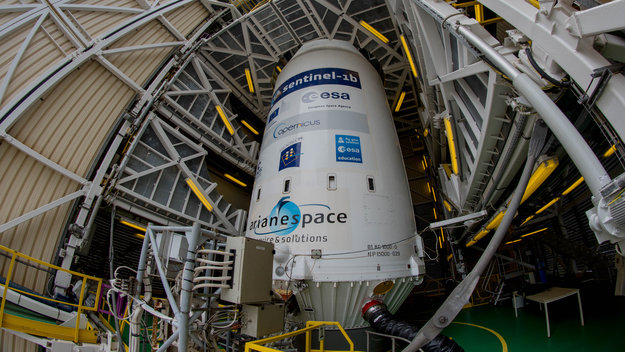
Follow the Sentinel-1B launch live from Europe’s Spaceport in French Guiana on 25 April. Streaming begins at 20:40 GMT (22:40 CEST), with liftoff scheduled at 21:02 GMT (23:02 CEST)
Launch delay due to anomaly
24.4.2016 22:17
Following an anomaly observed during the countdown for the launch of Soyuz flight VS14 carrying Sentinel-1B, the countdown was halted.
Watch Sentinel-1B launch
24.4.2016 10:20
Follow the Sentinel-1B launch live from Europe’s Spaceport in French Guiana on 24 April. Streaming begins at 20:40 GMT (22:40 CEST), with liftoff scheduled at 21:02 GMT (23:02 CEST)
Sentinel-1B liftoff delayed another 24 hours
23.4.2016 18:54
The latest meteorological observations indicate a 'red' weather conditions for the time of liftoff, initially set for Saturday 23 April 2016, therefore Arianespace has decided not to undertake final fueling operations with the launcher.
The launch vehicle and its payloads have been placed in stand-by mode, and maintained in fully safe conditions.
The new launch date is now set for Sunday 24 April 2016, at the precise moment of:
- 06:02:13 p.m., (Local time in French Guiana)
- 05:02:13 p.m., (in Washington, D.C.)
- 09:02:13 p.m., (UTC)
- 11:02:13 p.m., (in Paris)
- 00:02:13 a.m., (in Moscow) on April 24.
Sentinel-1B launch postponed
22.4.2016 18:51
During the technical review prior to the start of Soyuz fueling, the availability of the launcher, satellites, ground facilities and the launch base was confirmed.
Radar vision
22.4.2016 14:00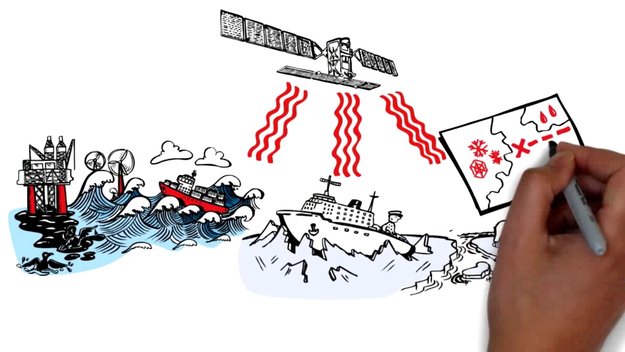
Discover how the Sentinel-1 mission uses its radar to make our lives safer
The many faces of Earth
22.4.2016 9:00
As Earth Day is celebrated across the globe, discover some of the aspects satellites can ‘see’
Teams ready for Sentinel-1B launch
21.4.2016 14:01
A final, full rehearsal has confirmed that teams at ESA’s mission control are ready for tomorrow’s launch of the Sentinel-1B radar satellite.



